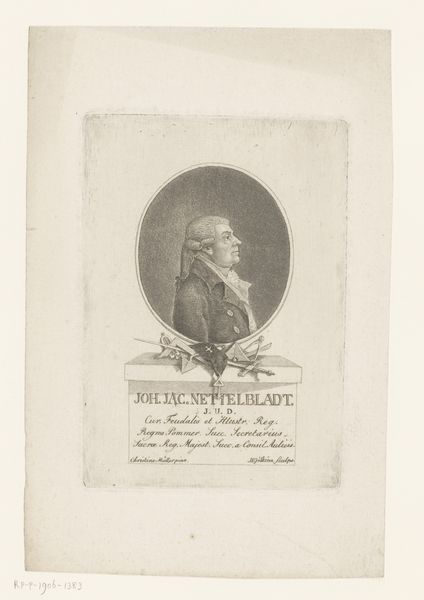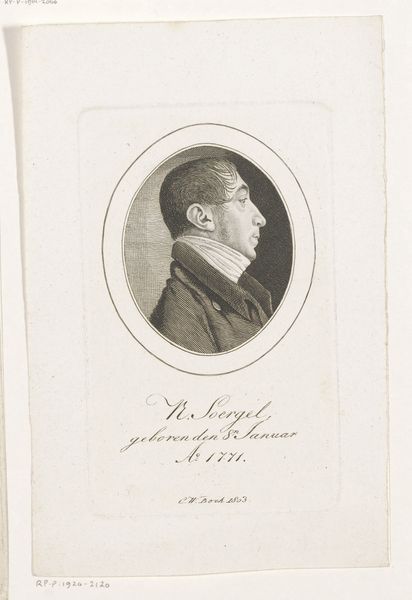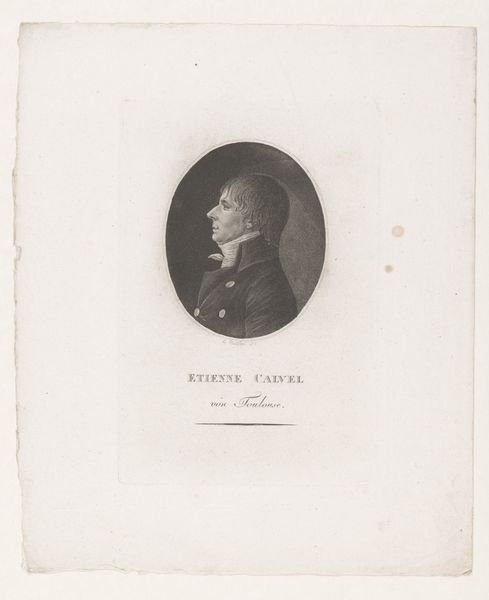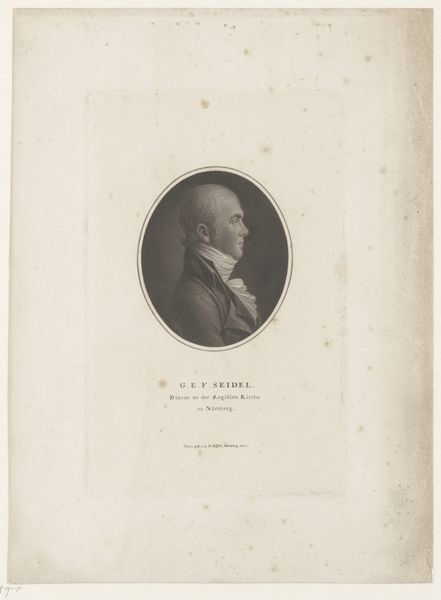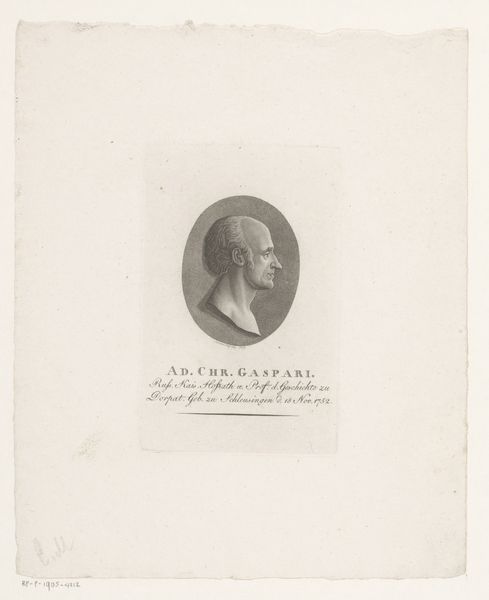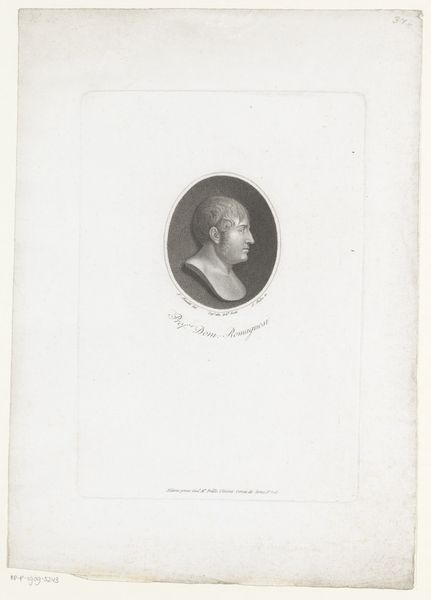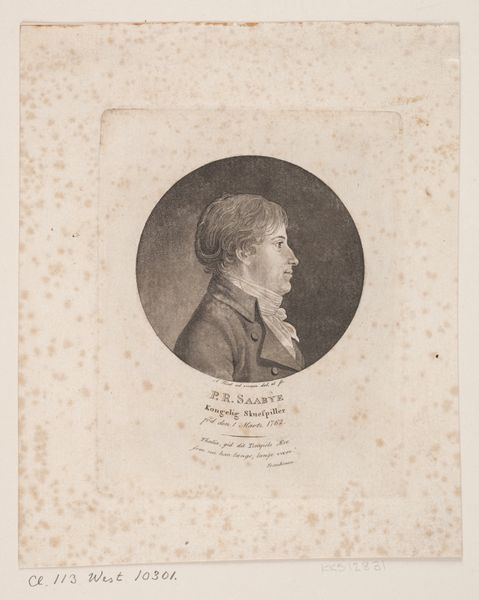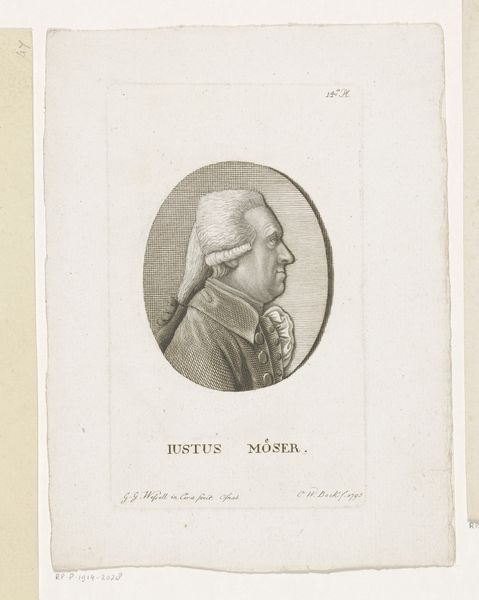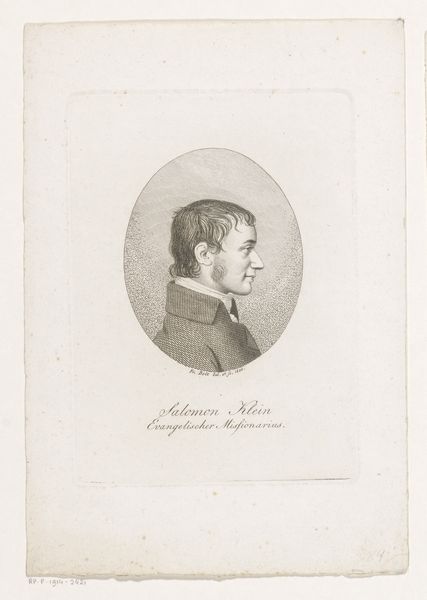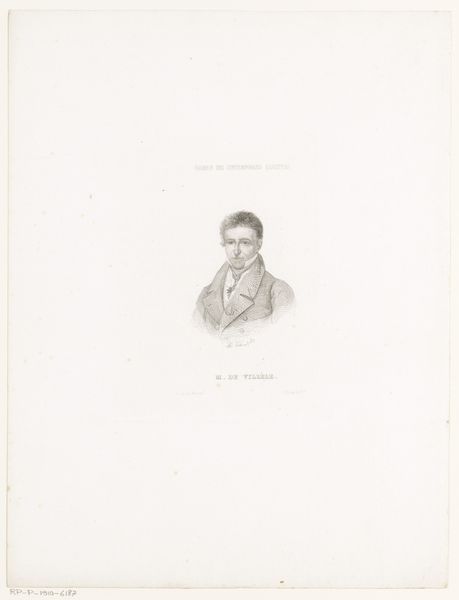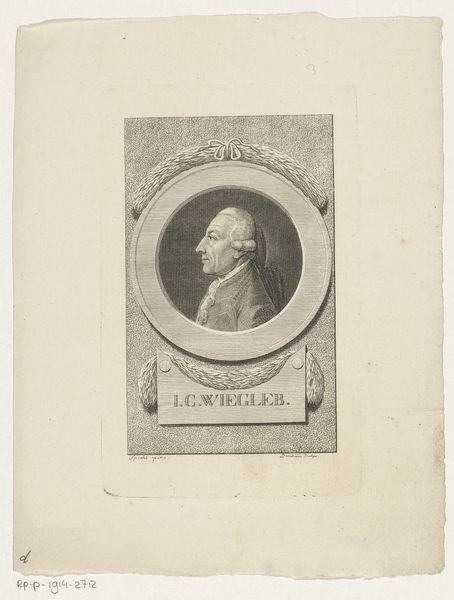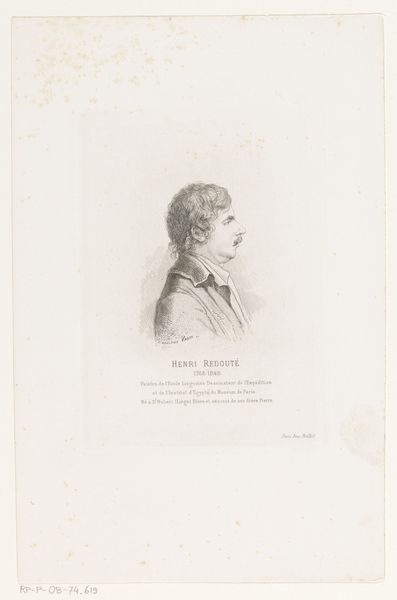
engraving
#
portrait
#
neoclacissism
#
aged paper
#
old engraving style
#
history-painting
#
engraving
#
historical font
Dimensions: height 126 mm, width 88 mm
Copyright: Rijks Museum: Open Domain
Curator: Here we have a print entitled "Portret van Samuel Gustaf Hermelin," dating roughly between 1775 and 1834, currently residing in the Rijksmuseum. It's an engraving by Konrad Westermayr depicting a profile portrait. What are your initial impressions? Editor: Stark. It's incredibly restrained. The limited tonality focuses attention on the precise rendering of the figure, and that historical font beneath just roots the image in its era, no? Curator: Absolutely. The visual language screams Neoclassicism: clean lines, idealized form, an emphasis on rationality. This piece also speaks volumes about the historical moment when the aesthetics favored this type of... controlled representation. How did those constraints reinforce hierarchies? What does it tell us about identity and power at the time? Editor: Exactly! The very process of engraving emphasizes control. It's painstaking, subtractive; each line carefully etched, demanding meticulous labor and specific tools. Paper was not so easy to manufacture as now. Its consumption becomes almost an expression of power itself. This engraving would’ve required not only the engraver's expertise, but the raw materials themselves represent wealth, and an infrastructure that values printed image distribution. Curator: It also gives me some things to think about concerning Hermelin himself. Considering the history he was born into, his image represents privilege, clearly. Yet, what layers of expectation come into play given gender norms and social expectations in that context, or perhaps regarding concepts of masculinity and class at the time of its creation? Editor: Those constraints almost fossilize social expectation, I'd agree. To me, it highlights how material practices are always embedded in social relations. This small print, though simple in appearance, is incredibly dense. Curator: Yes. The interplay of materials, labor, and historical context definitely pushes us to re-evaluate beyond its aesthetic simplicity. Thank you. Editor: Thank you. Examining it materially makes it really difficult to view it with pretense.
Comments
No comments
Be the first to comment and join the conversation on the ultimate creative platform.
